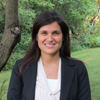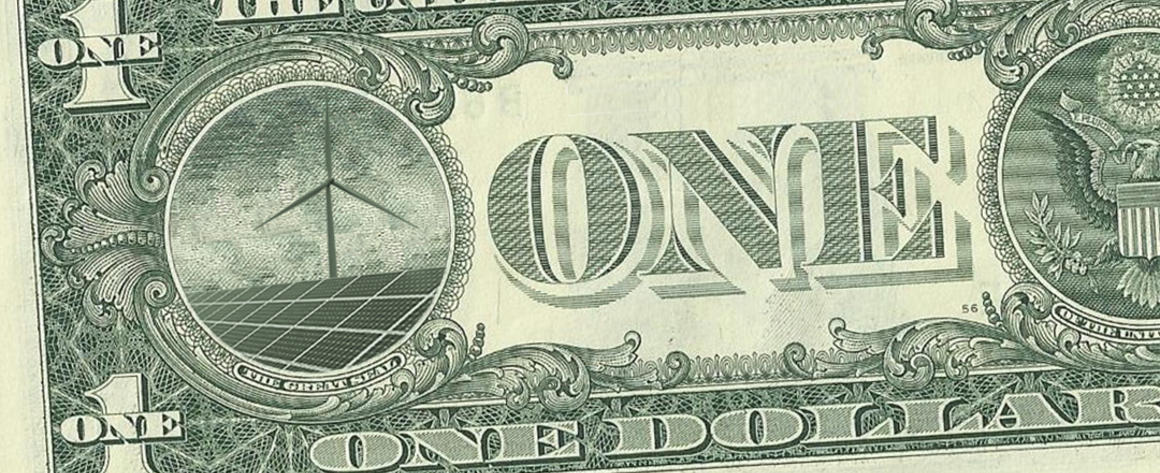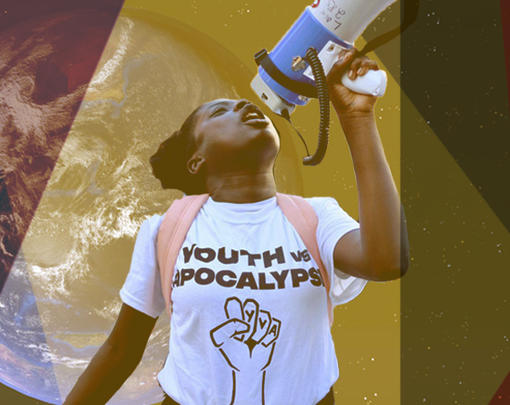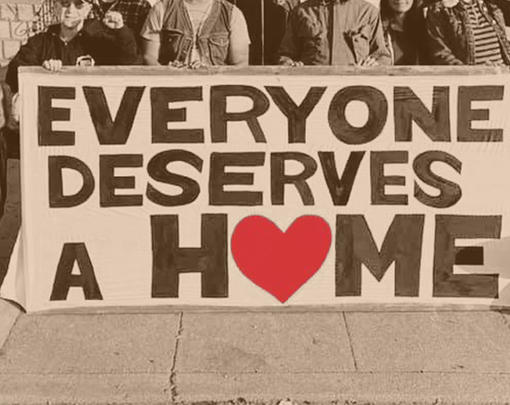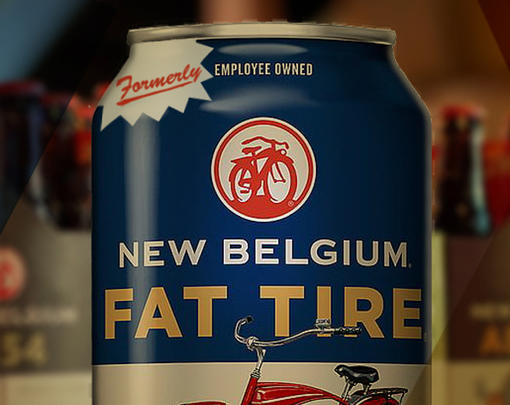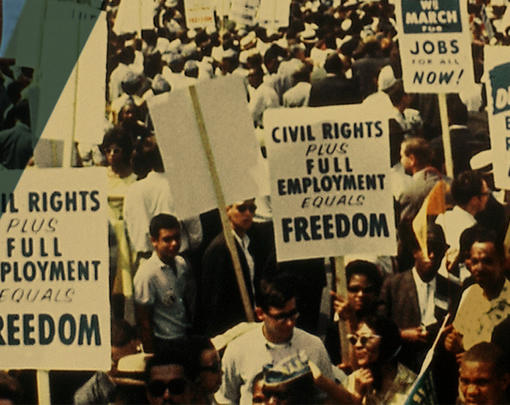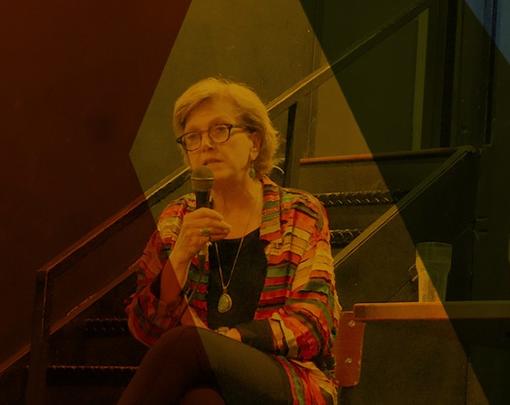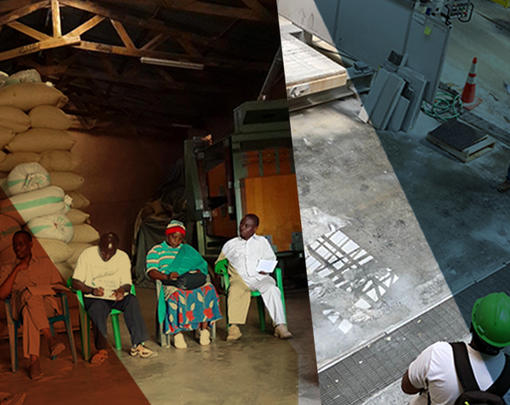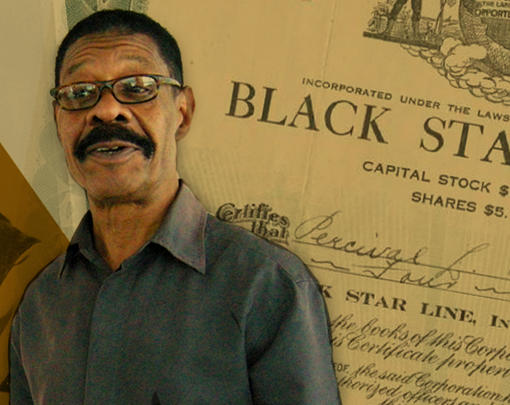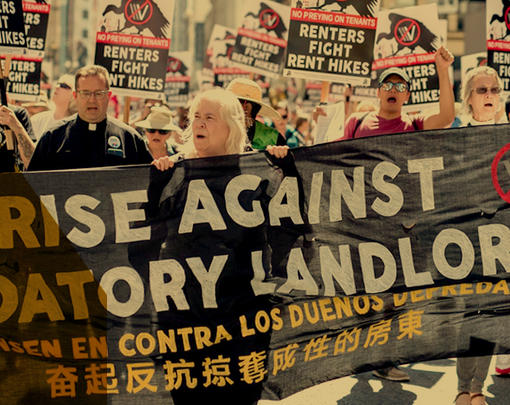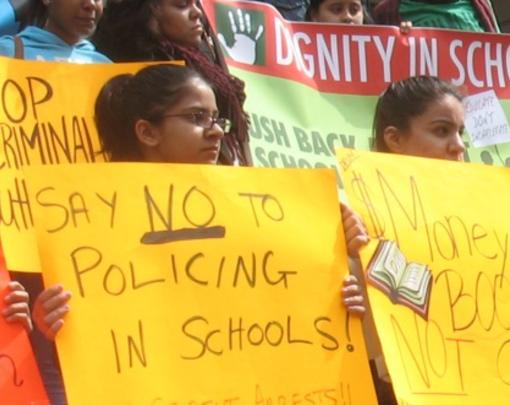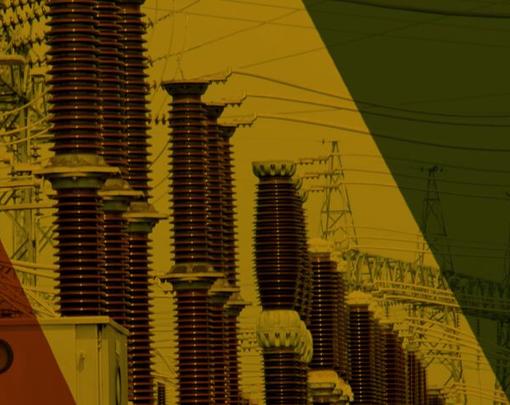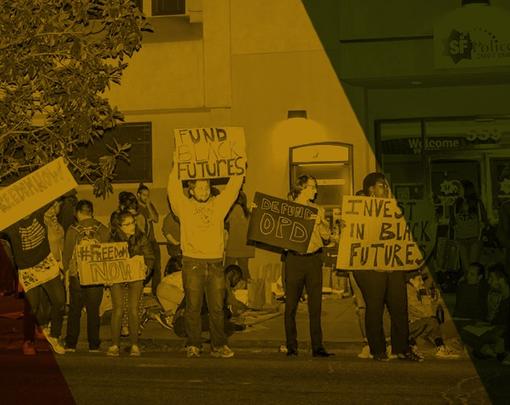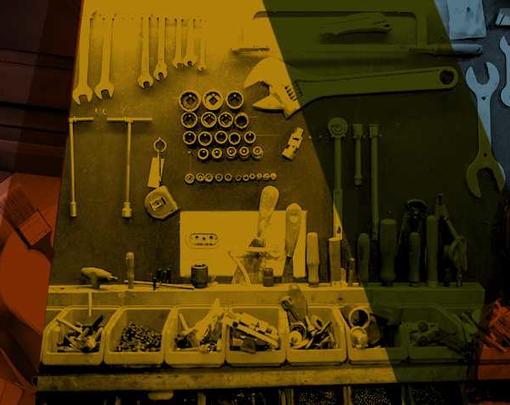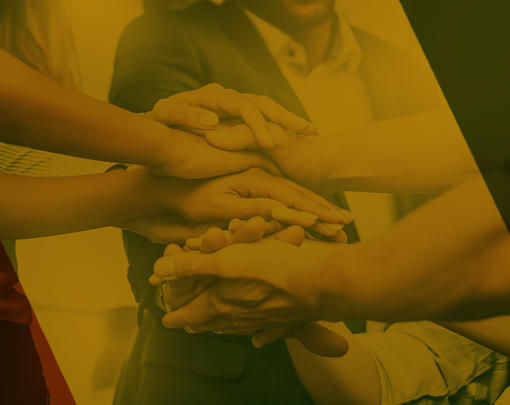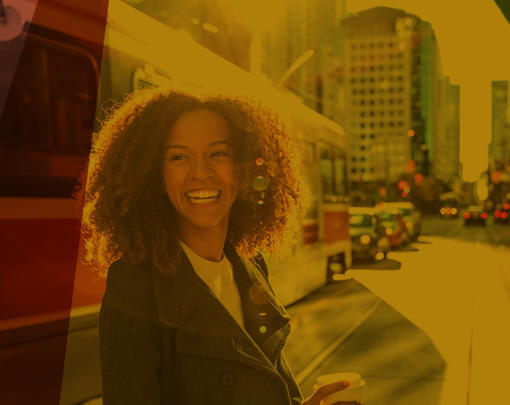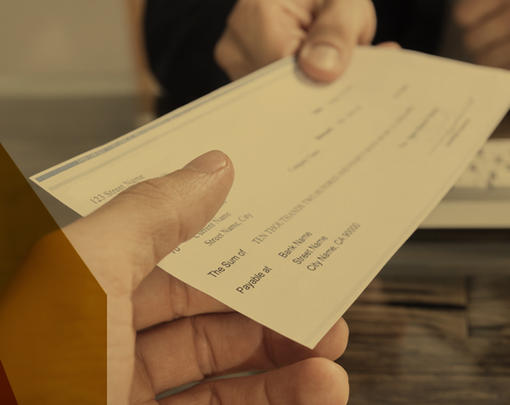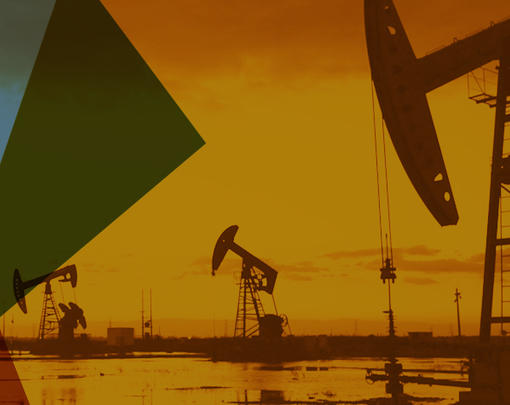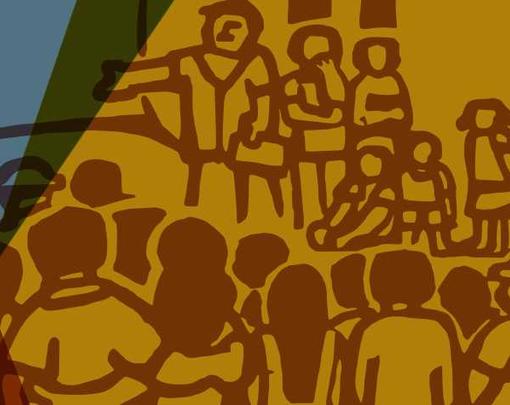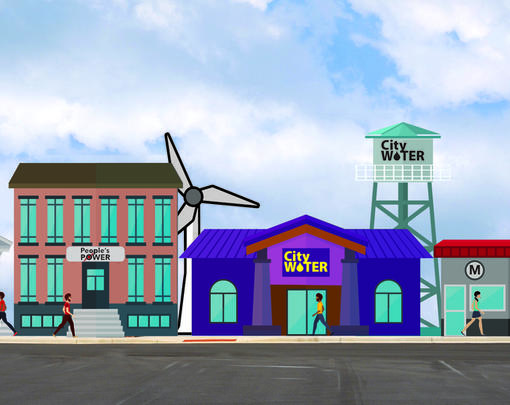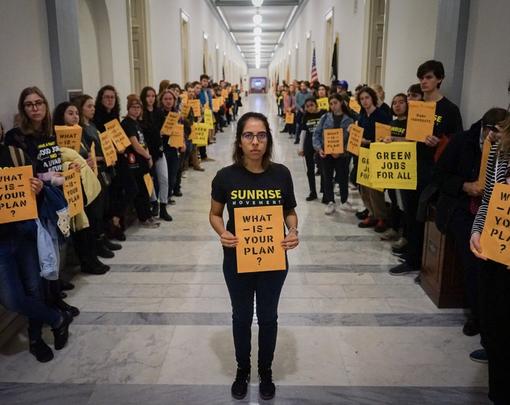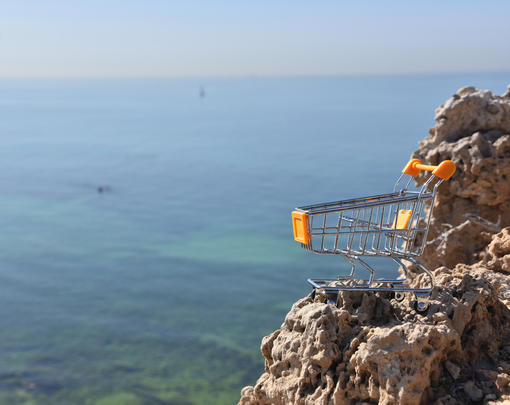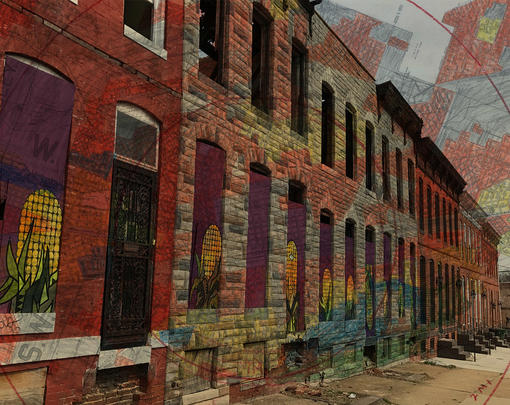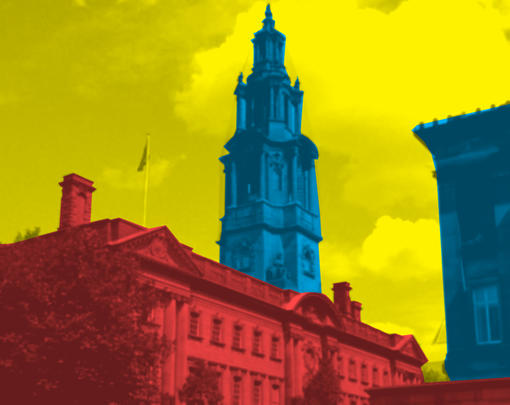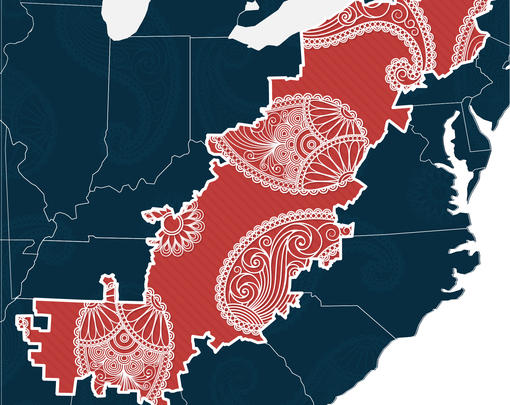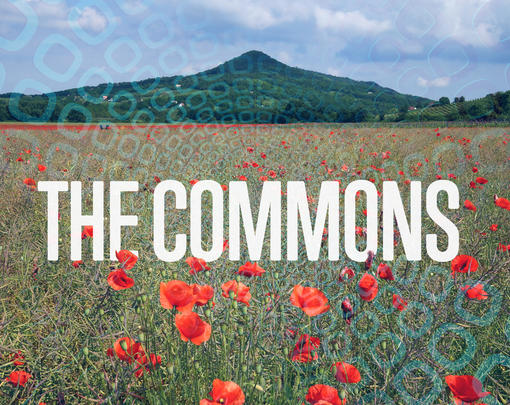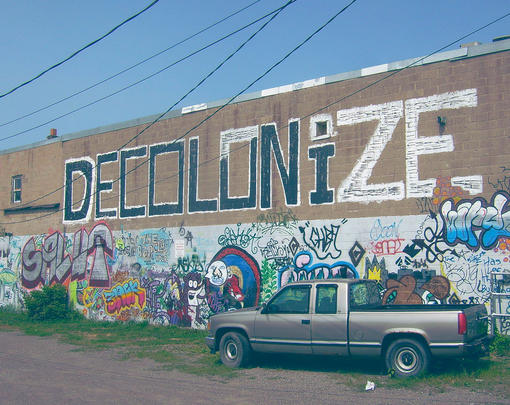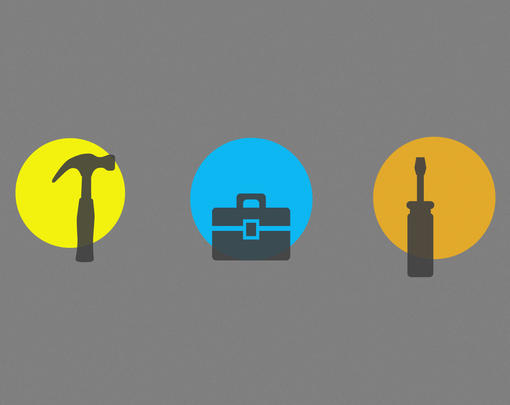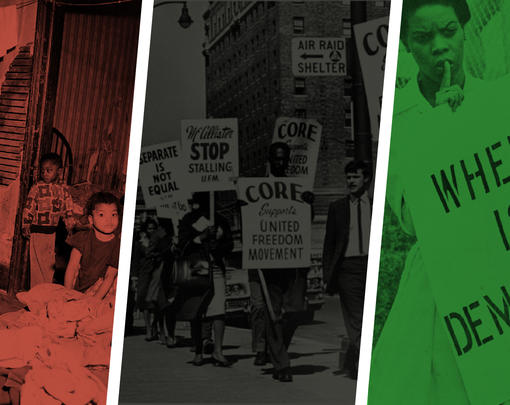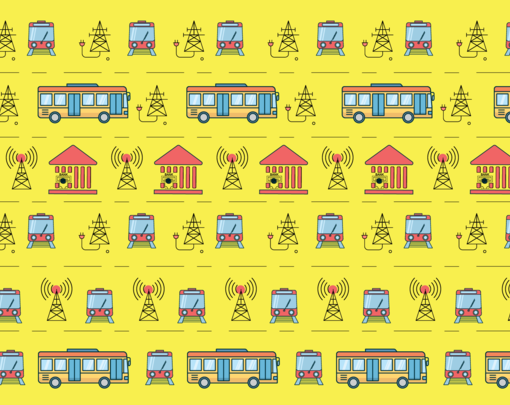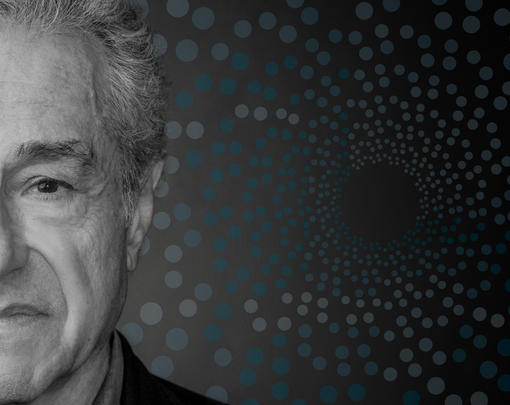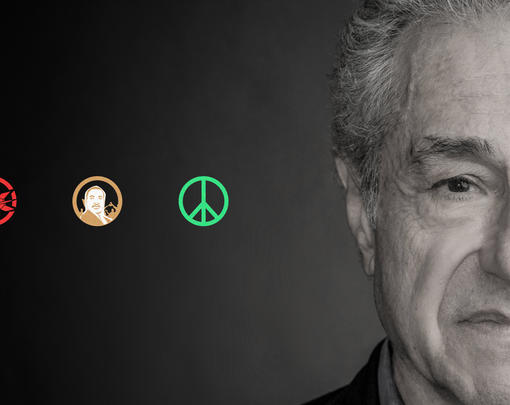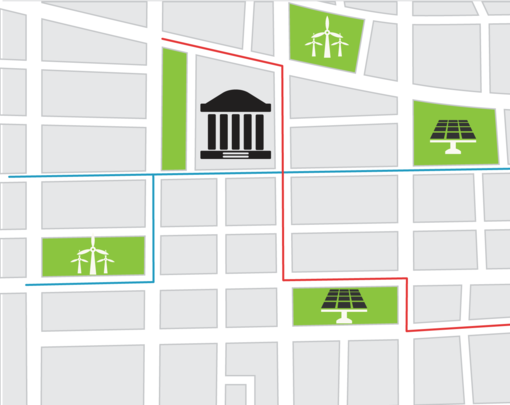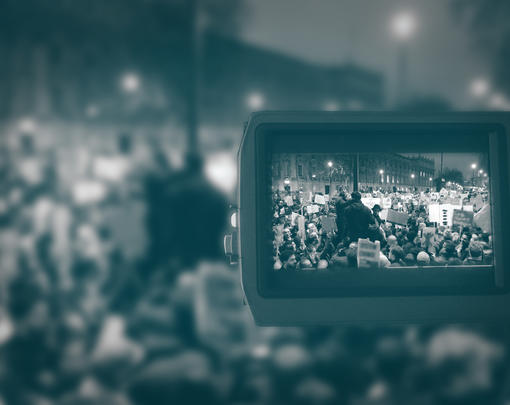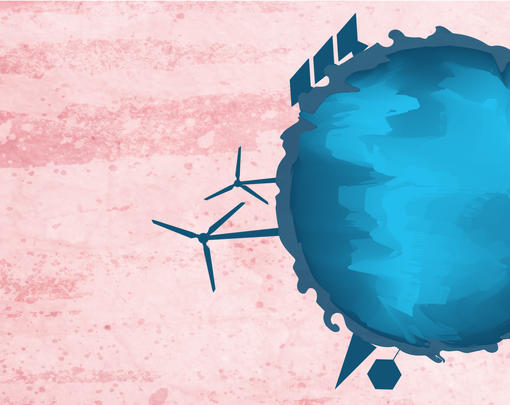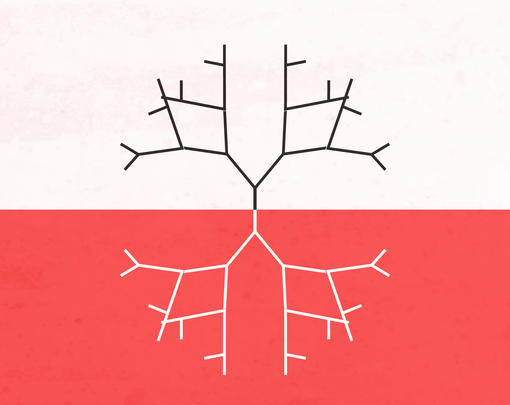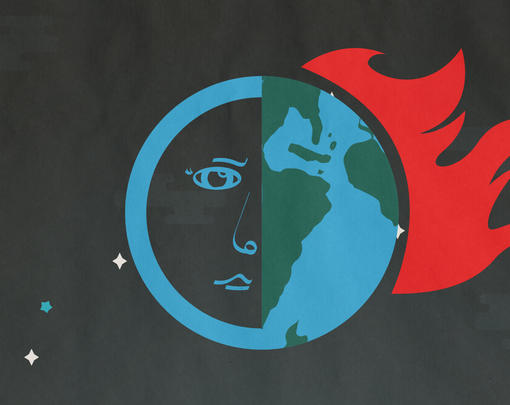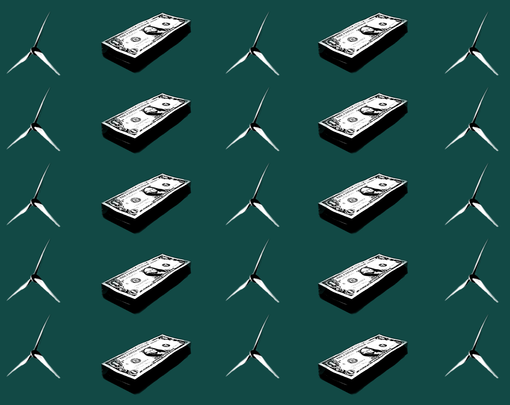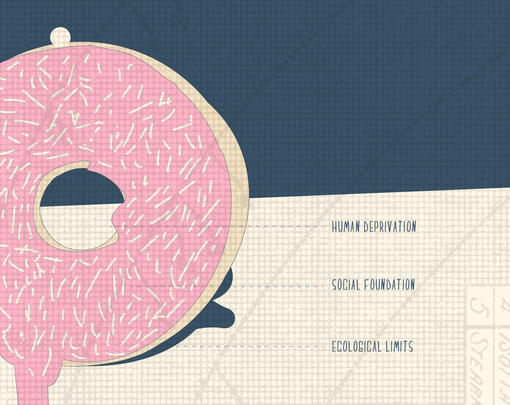This week we are discussing how to finance a transition from an ecologically harmful economy dependent on fossil fuels to a clean economy defined by renewables. We have three great guests tackling perspectives at different levels of service, from municipal to state to the federal level. We are joined by Jackie Fielder, an organizer working toward a public bank for San Francisco, Kat Taylor, the CEO of Beneficial State Bank, and Carla Skandier, a Senior Research Associate at the Democracy Collaborative.
The Next System Podcast is available on iTunes, Soundcloud, Google Play, and Stitcher Radio. You can also subscribe independently to our RSS feed here.
Adam Simpson: Welcome to The Next System Podcast. I’m your host, Adam Simpson. This week, we’re talking about financing the green transition, and I have three great guests with me today. I’d like to introduce them to you now.
First up is Kat Taylor. In addition to being an activist, philanthropist and entrepreneur, Kat is also the co-founder and CEO of Beneficial State Bank, a community development financial institution and certified B Corporation that aims to bring beneficial banking to low-income communities in an economically and environmentally sustainable manner.
We’re also joined by Jackie Fielder. Jackie is a member of the Three Affiliated Tribes, Hidatsa, and a descendant of the Cheyenne River Sioux Tribe, currently organizing the San Francisco Defund DAPL Coalition and Mazaska Talks and is also a spokesperson for the San Francisco Public Banking Coalition.
And finally my colleague, Carla Skandier, here at The Next System Project, where our work focuses on addressing climate change through systemic solutions. For the past years, she’s been leading the Quantitative Easing for the Planet Project, aimed at developing a plan to use the sovereignty monetary power of central banks to avert climate catastrophe.
Let’s dive right into it. Last year, the IPCC released its expected 1.5 Celsius special report, which presented the timeframe that society’s transition away from fossil fuels has to happen by 2030. Its release on October spurred not only a conversation on what it will take to implement this unprecedented transition and what little time that’s left, but also the broader question of how it will be financed. That’s what we’re talking about today, so I just want to throw open this first question to all of you.
Jackie, given your work with public banking, and Kat, your work at a mission-driven bank, a B Corp: Are traditional financial institutions, are they up to the challenge posed by climate change particularly as it relates to financing the transition?
Jackie Fielder: I don’t think they’re up to the challenge. Rainforest Action Network put out a report card showing which banks are financing fossil fuel infrastructure, the worst of the fossil fuels—for example, tar sands offshore drilling—and all of the banks are not doing so great on that report card. They’re pouring billions into this industry that in the long term is quite harmful not just to our financial stability, but also our livelihoods.
Kat Taylor: I’ll just jump on because I totally agree. The traditional financial institutions could be up to the challenge posed by climate change, but they are definitely part of the problem right now, and don’t let them fool you with their grand pronouncements about meager commitments to renewable energy because an institution with over $1 trillion or $2 trillion in assets, which is the case for a couple of the biggest banks, making a pledge to finance $2 billion in renewable energy, that’s a ridiculously small and self-serving commitment, and that’s what they’re supposed to do anyway is lend money. That’s how they make money and serve their equity shareholders.
On the contrary, they are still financing the dirtiest fuels in the fossil fuel regime, including coal, which is a bankrupt industry, with all due respect to coal workers and coal communities. Those coal workers still have life expectancies in their 40s, and the communities in which they live are shouldering the burden as taxpayers the pension liabilities that coal companies have shifted over in bankruptcy.
Without coal finance, there’s really no coal, and it’s the banks providing that coal finance. It’s actually less important that we encourage banks to finance renewables because it’s just becoming a good business proposition. They have to stop financing old nonrenewable industries that continue to enjoy federal subsidies and be in the way of a full transition. Just to note, the jobs argument is also suspicious because we know that far more jobs will be created in an advanced energy economy than will be saved by perpetuating falsely a fossil fuel economy. So here’s the Quantitative Easing for the Planet and public banks and aligned banks like us to make that transition possible by calling out the big banks.
Adam Simpson: Absolutely.
Carla Skandier: I second everything. I think the main problem nowadays with the traditional financial institutions is that they are focused primarily on profit maximization. There’s no problem per se on being a profit company, but if your only goal is to maximize profit, we’re going to be running into this conversation over and over again, is renewable profitable or not, which is not the model of conversation we want to have right now. In many ways, I do believe that greed cannot be truly green, especially from a sustainable perspective, so we need to start transition away and not rely on traditional institutions to do their job.
Adam Simpson: Right. This conversation we’re going to have today is really about alternatives, so I wanted to start at the local level, at the municipal level. Now, Jackie, you’re pursuing a public bank for the city of San Francisco. What role do you think a public banking institution can play particularly at the local level in the transition from our economy now to a more environmentally sustainable economy?
Jackie Fielder: A public bank is defined as a bank that is owned by a public entity. Whether that’s a national, a local or a state government, it serves the public and not bankers or private individual shareholders who expect extravagant returns on their investments. The genius behind the public bank is it has a mandate to serve the public, and what that mandate consists of is actually up to the people, the electorate that will eventually pass it.
Here in San Francisco, we’ve had a coalition of people from different organizations spanning from labor to environmental justice organizations to social justice organizations and affordable housing groups. We want a public bank to be able to finance really badly needed investments in our city, which are permanently affordable housing, sustainable agriculture, renewable energy, small businesses, and low-cost student loans.
A public bank in San Francisco can look a lot of different ways. It may not necessarily be a place where individuals can open accounts. That’s certainly an option at some point, but it’s really focused on being a bank that supports local credit unions and other non-Wall Street banks by providing capital that they can use to expand the lending capacity of the region.
Almost a year ago, the Friends of the Public Bank of Oakland organized a hearing on Germany’s behemoth Sparkasse Public Bank network. It’s a network of 400-plus municipally owned public banks in Germany, and, I think, for the past 18 years, Germany’s Sparkasse Public Banks have financed a whopping 72.5 percent of Germany’s transition to 41 percent renewable energy production and consumption.
Fortunately, even the most mathematically allergic people can grasp the magic behind this wonder because, again, the public bank will not have these extraordinary costs associated with the kinds of costs we see on Wall Street, which are huge compensation packages and bonuses for executives of the bank that make super risky decisions as we saw in the 2008 recession. They don’t have to pay out extraordinary dividends to shareholders, and so the savings are passed on to the people that are going to borrow the money, and that means lower interest rates for those people and those businesses, and it’s going to keep the cycle of money in the San Francisco Bay Area while also being able to provide most of the capital that we need to transition to a renewable energy economy.
Adam Simpson: I want to move up from the public bank in San Francisco being focused on the immediate community in San Francisco to one level higher. Kat, you’re the CEO and founder of Beneficial State Bank in California, one of the few mission-driven B Corp-certified financial institutions that I know of. What does this mean for how Beneficial State Bank views the environment as part of how it views lending and its financial mission?
Kat Taylor: I might back up a little bit because, hopefully, the way we observe green finance is the way all banks observe green finance. Banks are super important. They are, in our view, metaphorically, the original and most powerful form of crowdfunding. We pool our idle cash, and those become deposits in banks in order to fund the world that we actually want to live in, so banks should be listening to us, the depositors. It’s a huge industry. As I mentioned before, there are $12 trillion of deposits domestically in the United States versus $3 trillion in assets in oil and gas globally, which even that is hopefully overstated because they will never be fully developed.
In addition to being just a large aggregation of usable cash, our deposits are protected by FDIC insurance. That stands for Federal Deposit Insurance Corporation, and that’s a quasipublic institution that the banks fund with premiums but stands in place of the taxpayers as guarantee that any deposits in a bank up to $250,000 per person are risk-free, meaning, they can’t be lost. Even if a bank fails, the FDIC stands behind that and will make good on all those deposits. That allows banks to collect those deposits very easily and for very cheap because of it being risk-free.
That’s what fuels that aggregation of deposit capital in the banks and allows then that equity in the banking system to be leveraged exponentially, so, for every $1 of equity that we hold in our bank, we’re allowed to collect up to $9 of deposits. There’s something called the fractional-reserve system that makes it a little more complex, but, simplistically put, that means we can make a $10 loan with a $1 equity and $9 of deposits, so that’s exponential power. Then it’s a very disciplined process because we’re heavily regulated for safety, soundness, fair lending, anti-discrimination, anti-money laundering, all sorts of public objectives. We are also a recycling model, so, when we lend money out, we expect it to come back so we can lend it again. It means our impact accumulates over time.
A system so powerful and so backed by public prerogative and mission should be in alignment with stakeholder values, but it’s not currently. It’s only in alignment with the profit-maximization goal of equity shareholders.
In our feeling, we want to be aligned in seven areas of activity, and the first one is ownership and governance. Ownership and governance should serve a variety of stakeholders, not just the equity shareholder, but also our customers, our colleagues, the communities in which we operate, the planet, and the public interest at large. That’s the first area.
The second area we monitor closely is our investment and lending practice. All banks hold investment securities, but mostly what they do is lend money, and that lending practice should be in concert with the crowdfunded values of our depositors and other stakeholders, and, just to be clear, it’s not that a single deposit funds a single loan, but all deposits fund the lending practice and it should have alignment.
The third area is how we treat our customers. Our depositors, our borrowers should be all healthier the day after they take a bank product than they were the day before with the mission at the heart of every bank product and service.
The fourth area, our corporate practices, like how we treat our employees. For instance, we pay 150 percent of living wage—fully benefited, no part-time work unless requested—in an industry where one sort of bank tellers are on some form of public assistance. We also are about how we treat the planet, so we measure our greenhouse gas, water and landfill footprint, those kinds of other corporate practices.
The fifth is our transparency and accountability, what do we report on and hold ourselves accountable to, and the sixth and final is whether we advocate in government, in policy in a responsible basis and in the public interest.
Beneficial State Bank is a triple bottom line bank serving social justice and environmental well-being in equal measure to financial sustainability. If we don’t compete well in the market, we can’t live on to produce our mission outcome, so all three of our bottom lines are important, and we focus especially on that lending practice for the reasons that I said in favor of a new economy, including a new green economy, where everyone does better and so everyone does better.
We can surmise that even those shamefully profiting from the fossil fuel world still want the rest of us to save the planet for themselves and their families, so we lean into a renewable, just economy. Principled finance is what we need more than anything to cure our world, and we must never separate social justice from environmental well-being because, when we do, one or the other loses out and divides us against ourselves. Perhaps, environmental justice subsumes our mission work fulsomely, and so we’re alert to recasting our triple bottom line toward that, but, in any event, we listen carefully to our stakeholders and strive to produce benefits for all and harm for none.
I want to just note that a public bank is even more like crowdfunding and voting because, essentially, we are voting with our money since we elect our representatives based on our values and we hold them accountable to operationalizing those values not only through legislation, but perhaps through the state spending activities, including banking especially. A state public bank would additionally bring all that economic activity in-house and keep our money in the circular economy here, place-based, instead of exporting it to Wall Street that anonymizes and concentrates wealth in the hands of a few superpredators of the financialized economy.
Adam Simpson: Carla, you do a lot of work on the role central banks can play in meeting the challenges of climate change from a federal level. Can you tell us a little bit how you view the Federal Reserve’s role in the green transition?
Carla Skandier: Sure. Of course, the state and the municipal level have a key role to play and I think, particularly if we are taking democracy into consideration, decentralization would be a key moving forward, but I think we cannot ignore the institution that is actually at the top of the pyramid of the financial system.
I also work a lot in understanding the powers of this agency that holds the ultimate sovereignty over the creation of money, and one of the ways that the Fed can significantly influence the financing of the transition is simply by shortening the investment gap on renewables and transition initiatives since they have the power to create money.
Another thing that we touched briefly in the beginning of this conversation, in particular when Jackie and Kat were talking about bank institutions financing fossil fuel investments, is that the Fed can also play a key role in promoting a knockout blow to the fossil fuel industry and allowing the government to have a planned phaseout of its production over the next 11 to 12 years if we are targeting 2030.
As we are looking at this dual potential, how we can actually leverage the monetary tools that are available to the Fed and the power of money creation, we at the Next System Project are developing a plan to use quantitative easing, which I know sounds like a bad word, but, basically, it’s just a monetary tool that is available to the Fed. They use it on a daily basis for several reasons, and while the monetary tool is going to the open market operation, quantitative easing is the same, going to the open market operations, but it’s just buying large scale assets in this market operation. That’s quantitative, and easing is just to ease the market, so we are looking into what happened in 2008 when the Fed created over $3.5 trillion dollars over six years that was not paid by taxpayers but was actually used to save Wall Street.
We are looking into ways that the next time the Fed decides to use this monetary tool, it could actually be used to save the people and the planet. There are a lot of ways and a lot of possibilities and, if the Fed wants, it can do it, and this time around, it will be doing it for the right reasons, not the wrong reasons. So I think that is one of the ways the Fed can move forward the green transition.
Adam Simpson: Let me go back to you, Jackie. I’m sure you’re paying close attention to the conversations around a potential Green New Deal. When you hear about this, what opportunities do you see for a public banking institution? Do you think that when people are talking about the Green New Deal, does that have an impact or would that have an impact on public banking? What role do you think public banking would play in that?
Jackie Fielder: We’ve gotten a lot of questions about this since Representative Alexandria Ocasio-Cortez put public banks in her Green New Deal plan. I mean, yes, we’ve been thinking this whole two years and, mind you, we’re pretty new to the world of finance. We care very much about putting our money where our mouth is, and this all began actually with Standing Rock when we saw from afar in early 2017 that Wall Street banks were loading hundreds of millions of dollars each to the pipeline that went through indigenous territories, namely, the Dakota Treaty territory protected by the Fort Laramie Treaty of 1851, so public banking for us has also always meant financing and bottom-lining a transition to a renewable economy, but the Green New Deal has added lots more interest into public banking because of that.
I think it’s definitely an option. I don’t want to disregard any other options for financing a Green New Deal. They’re over my head, but Dr. Stephanie Kelton is one who has authored a bunch about how basically the Treasury could, in my understanding, could bottom-line this outright, how the original New Deal was created, and as long as the production output of the labor does not exceed what’s allotted, it shouldn’t be a problem. Again, that’s over my head mostly. I’m hyper focused on organizing an effort in the city to educate people about the promises of public banking, especially a municipally owned public bank, for our city specifically.
The Green New Deal has been a huge help to restart the conversation for public banking. That’s been going on for as long as this country’s been around, but with the lens of this being a potential to throw the public capital onto the priorities that we actually should have to contribute to the public’s well-being over generations, it’s absolutely crucial that public banks be a part of that conversation in a just transition.
Adam Simpson: Kat, I want to ask you the same question. In terms of how Beneficial State Bank operates with the triple bottom line. Do you think that a Green New Deal, and maybe even as part of the Green New Deal, more public banks would change the ecosystem at all, and how do you think that might impact your work at Beneficial State Bank?
Kat Taylor: I think both public banks and the playbook about aligned banking for the large big-buyer demanders of banking services, including states and municipalities, could align our finance in favor a new Green Deal rather rapidly. As I mentioned in the opening, we have to stop the biggest banks from financing the old nonrenewable industries, but there is a huge business opportunity for public banks and states and municipalities who discipline their banking supply chain and tell their bank vendors that they have to align their lending practice with the state’s values to finance everything from affordable housing; beneficial infrastructure; renewable energy; new forestry products for the built environment; responsible water projects and regulation; regenerative agriculture; climate mitigation; small business capital, especially for those communities chronically left out of finance like women and minority-owned and immigrant communities; business communities; fair and transparent retail products, either through the bank vendors or even one day through the public bank, as Jackie mentioned; and financing and refinancing of student debt that represents just a tragic overhang on our future, our most precious assets, the next generations.
Adam Simpson: Carla, I want to go to you because I have a question about climate risk. Many of the central banks around the world are talking about their mandate in terms of assessing broad economic risks to the financial system writ large due to climate change. Could you say a little bit about this?
Carla Skandier: Yes, I’ll be glad to. Basically, what has happened is that since 2017, 18 central banks around the world came together and created what they called the Network for Greening the Financial System. Basically, this is a voluntary network, and they have the goal of better understanding of managing the financial risks and opportunities related to climate change. In the very first report that was actually released just a few weeks after the IPCC report in October, they recognized that climate-related risks are actually a source of financial risks and it’s within their central banks’ mandates to ensure a resilient system, and what that means is that they need to take action to reduce climate-related impacts to the financial ecosystem.
One of the things that, for example, the Bank of England, which is not only a member bank of this network but is one of the leading central banks in the world dealing with this issue, after this report announced that they’re going to plan to include this year, 2019, the impact of climate change in its bank stress test, so it’s going to be the first central bank to actually include such criteria in their test.
We’re going to see movement around, perhaps, in the way they’re going to structure and assess their risks. It’s still questionable how far they’re going to go, but it’s definitely a conversation that we need to start having and, if done correctly, it could actually start downgrading some of the banks that are not doing well, although they talk about being sustainable. It could have impacts on the insurance companies as well, so there are a lot of things that could unfold from this initiative.
What is oddly enough is that the US, which is historically the top greenhouse gas emitter and currently the top oil and gas and a top-three coal producer in the world, has remained silent on this issue. I’ve been following the Fed, and there’s no information there. They are not part of the network. They’re not engaged even as just an observer of the network, and there is no conversation in public officially regarding climate-related risks.
In practice, what happens is that, without the Fed assessment, it’s very difficult for people to quantify and mitigate those risks in the United States. Right now, it’s just a conversation, but there’s a lot of numbers out there that are actually horrifying. Citigroup released in 2015 an estimate of how much some of this climate-related risk could impose onto financial system. They looked specifically into the carbon bubble, that is basically transitional risks related to moving away from fossil fuel and stranding along the way the assets that are not going to be able to be turned profitable for the fossil fuel investors. The way they evaluated it, they concluded that it could be as much as a $100 trillion globally, which means many times, as much as four times, more than the housing bubble that triggered the latest crisis.
Now, these are all global numbers, which is why some of the central banks are actually digging in and trying to understand within their own countries how much of this risk is actually real. There was a study that was published last year in Nature that deals with climate-related issues that’s said that countries that are fossil fuel producers—the United States—and climate policy late adopters—United States—will be the clear losers from the finance-related risks related to climate change. So, yes, we’re heading to some troubled times if the Fed doesn’t start to assess some of those risks as well.
Adam Simpson: Kat, I want to go to you now. I was looking through the Beneficial State Bank’s website, and I saw that it’s a member of the Global Alliance on Banking Values, that it identifies as a values-based bank, and I just wanted to ask, in practical terms, how does that impact lending decision, in particular regarding the environment and what are the main challenges when you’re operating from a values-based starting point?
Kat Taylor: Thanks. Anything we can do to enshrine, act upon, and monitor, banking with values is good for our own triple-bottom-line model. Our theory of change is we hope that the large regional banks who are intermediaries for us will pick up our playbook and act more like us out of enlightened self-interest, to gain business of deposit, equity and human capital and for our transparency and accountability.
We join memberships and monitoring agreements readily, including the Global Alliance for Banking on Values and B Corporations as well. We have to get banking aligned with our values or it will literally kill us. We are just a small catalyst about this, but those trade associations are super important to us. B Corps also make visible all the institutions in the economy that elevate values to their highest practice, and GABV does it up on the global stage. It also puts companies on notice that they may lose business to those of us in the GABV or those in the B Corp universe because we are serving all stakeholders and our branding is honest and ubiquitous. Increasingly, millennials and Gen Zers are evidencing that they seek full integration in their lives. They want to shop, work and invest in concert with their values, so we think we’re going to win this in the end, but we do better together than we can apart.
The GABV is yet another regime that keeps us accountable and transparent. It does govern our lending practice, but we think there’s good business to be had in service to zero fossil fuels and maximum renewable energy just to choose one value of a host of others. There are also strong trade associations where we can learn from bigger and more longstanding organizations, big banks like Triodos, GLS Bank in Germany, BRAC Bank in Bangladesh, and Crédit Coopératif in France, and then being part of a global association allows us to support global activism for green and social justice values as well.
Adam Simpson: Jackie, when it comes to public banking, we’re big believers here at the Next System Project. One of the primary examples we have of such an institution in the United States is the Bank of North Dakota, which played a harmful role in financing the Dakota Access Pipeline. Do you have any thoughts when you’re thinking through advocating for a public bank for San Francisco on the governance question to ensure democratic accountability, accountability to the public, but also ensuring environmentally positive outcomes?
Jackie Fielder: Absolutely. The Bank of North Dakota, just a note on its financing, it didn’t finance the Dakota Access Pipeline itself, but it did make a huge multimillion-dollar loan to the state of North Dakota so that they could militarize law enforcement response, really violent crackdown. For example, in late November of 2016, they had water cannons sprayed on protestors as they were protesting out on a road, and it was below-freezing temperatures, and so that’s not the kind of business our bank in San Francisco should be in. That’s why we want to pass a really strong set of mission and principles in order to get this bank going.
There’s an effort to get a public bank commissioner governance structure going on the November 2019 ballot, and this essentially would be a departure from the Bank of North Dakota governance structure, which is very top-heavy actually. At the top of the Bank of North Dakota, you have the industrial commission, which is the governor, the attorney-general, and the head of agricultural department. We would not have such a top-heavy body governing the bank. In fact, the board of directors is going to be making the calls and financial outlooks for the municipal bank here in San Francisco, but the board of directors should probably have a set of expertise in banking and a lot of experience especially because this public bank is a new endeavor in the nation as far as cities go and post-2000, so the bank would be governed by a board of directors, but how do we make it accountable to the people of San Francisco and the people that will be affected by its lending decisions?
We’re thinking that, again, the mission and principles and perhaps even financial goals are sets of principles that would perhaps prevent an example in which the bank is used for harmful endeavors like a government crackdown on protestors. It could also be carried out at the very least, initially, by a commission that is set up through amending the charter of San Francisco. This means that the commission would be more representative of the people of San Francisco’s wishes and priorities for a bank. For example, maybe the staff or the commissioners have a variety of different expertise in the fields that we want this public bank to lend, such as renewable energy, low-cost affordable housing development, small businesses, student loans, maybe even sustainable agriculture.
There’s definitely a lot of thinking going into how that commission should be established, how many seats, what’s its role. It’s looking like the commission would vote the city share, so with the city being at least the majority controlling interest of the bank, the bank would have to be a separate legal entity just so that the bank is not subject to the whims and cronyism of politicians. We definitely want a firewall between everyday city political operations and the bank. We believe that a board of directors and a commission could potentially provide that.
Adam Simpson: It sounds like you’ve put a lot of thought into that very difficult question. We’re about out of time, so I want to bring it to a close. The theme of today’s podcast has been about how to finance the transition and, as conversations are going on, about the scale of the problem of meeting the IPCC’s 11- to 12-year deadline in terms of an energy transition, let alone the other systems that are impacted by our economy.
Frequently, the popular refrain for tamping down action is, “But how will we pay for it?” I’m sure you’ve all heard this before, but I want to know how each of you tend to react to this question. It’s posed as a way of demobilizing action to meet the challenge of climate change, but I just want to know how you all react to this. Carla, I’d like to start with you here.
Carla Skandier: Yeah. Sure. I work with the federal level, which might be applicable also when you think about public banking not as much as to a private one, even a mission-driven bank like the awesome bank that Kat founded, but my approach to this question is that we do have the money, especially in a country like the US, which is the wealthiest nation in the world and with monetary sovereignty over the creation of a strong currency like the dollar. So when some people pose this question, how we’ll pay for it, for me, it’s more of a question of what monetary tools and financial institutions we will use and create to finance the needed transition. It’s not a financial question per se, although we do need to get to the nitty-gritty of monetary tools and financial institutions, but, in my perspective, it’s more of a political question than anything else.
Jackie Fielder: Yeah. I think that when faced with the question of how we’re going to pay for this, go right back at the climate disaster: How are we going to pay for rising sea levels? How are we going to pay for contaminated drinking water, for pollution, for, in California, the fires and the lives lost in that?
Climate change, global warming, climate justice, whatever you want to call it, is already going to be astronomically expensive. It’s going to affect the way that we buy food. It’s going to affect the way that we commute. It’s going to affect the way that we are able to have a healthy livelihood on this planet, and so there’s nothing as valuable as clean water, clean soil, clean air. It’s a shame that we would have to weigh the costs and benefits of saving that. There is no option. There’s only the political interests that stand to gain from very short-term thinking in investments in fossil fuels.
Kat Taylor: I wholeheartedly agree with everything that Jackie and Carla said, and I honestly think this is the hugest red herring, the “how will we pay for it” question. When we get politically aligned and scientifically informed—all of us—about climate risks, attending to it will pay for itself. It will pay for itself through public finance where state banks like the bank in California, which has a AAA bond rating, is already investing in renewable and climate infrastructure. It’s allowed to grow and prosper.
When public finance reimagines a municipal bond, which is a really wonderful way for the public to democratically participate in the financing of their future, and companies like Neighborly are trying to proliferate a new and more tracked version of a municipal bond, this public finance can happen at a good rate of return because investing in renewable energy and climate-smart infrastructure is just a good business proposition, too. It will pay for itself with new living wage jobs that fuel the overall economy through good business opportunities for commercial banks and the capital markets, and better wagers for more resilient livelihoods and healthy local living and circular economies.
What we cannot afford, as Carla and Jackie have already said, is not to take action. We have to generate a just transition now and, if we stop subsidizing the old world and use all the financial tools at our disposal for the new advanced energy economy, we could do this in a seriously short amount of time.
Adam Simpson: Thanks again to Kat Taylor of Beneficial State Bank, Jackie Fielder of the San Francisco Public Bank Coalition, and Carla Skandier of the Democracy Collaborative. Thanks, all of you.


